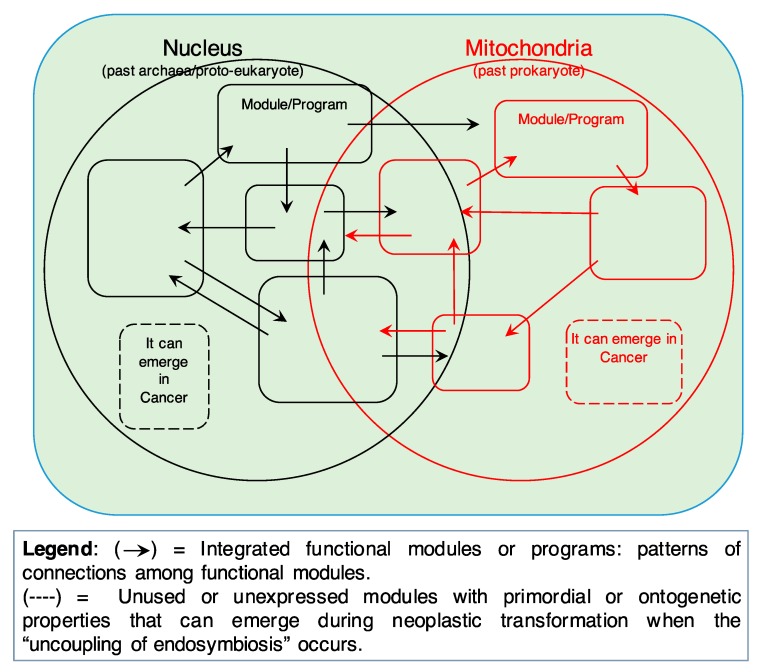Figure 2.
Both informational (past archaea/proto-eukaryote) and energy/mitochondrial (past prokaryote) components should be viewed as made up of fully functional integrated modules or programs. Modules integrate information according to patterns of connections (→) and are highly flexible. In fact, different modules can share a given component depending on the functional status of the cell (robustness of cellular networks). However, unused or unexpressed modules (dashed lines) with primordial/unicellular-like properties (or reminiscences of these properties in the functionally integrated modules) can be present in eukaryotic cells, and “emerge” during neoplastic transformation when the “uncoupling of endosymbiosis” occurs. This would confer primordial/unicellular-like properties to cancer cells (i.e., fermentative glycolysis, adaptation to anaerobicity, cell movement, etc.). These properties may reside, as an archaic memory, even in the cellular modules in current use (solid lines), unexpressed under normal conditions but re-expressed by cancer cells.

